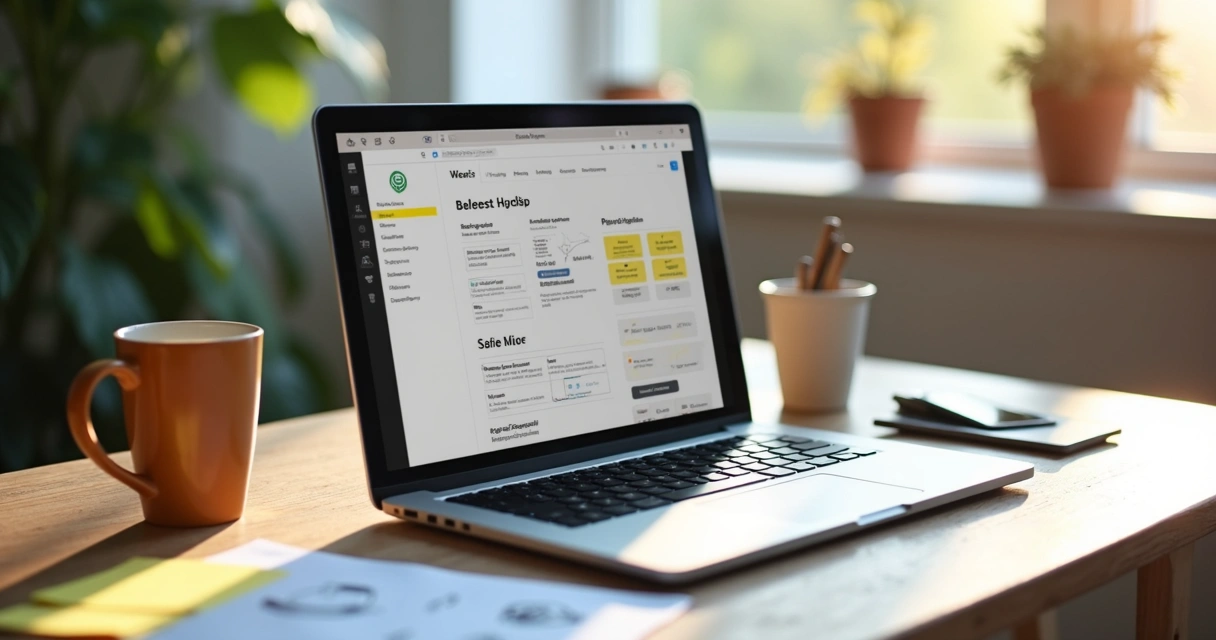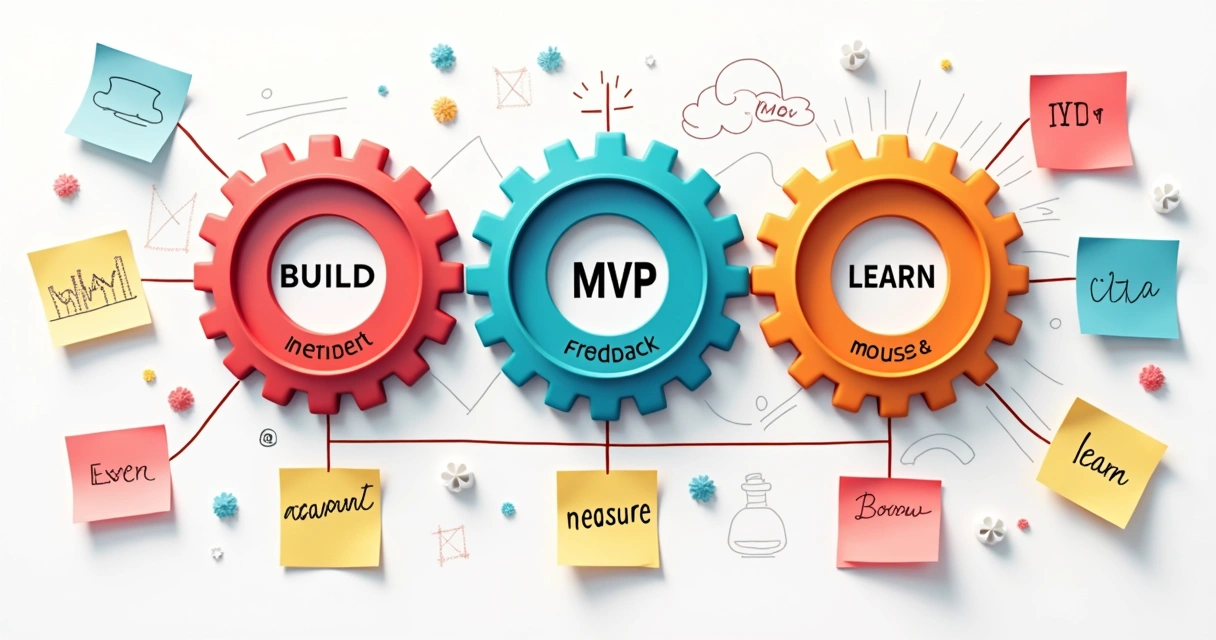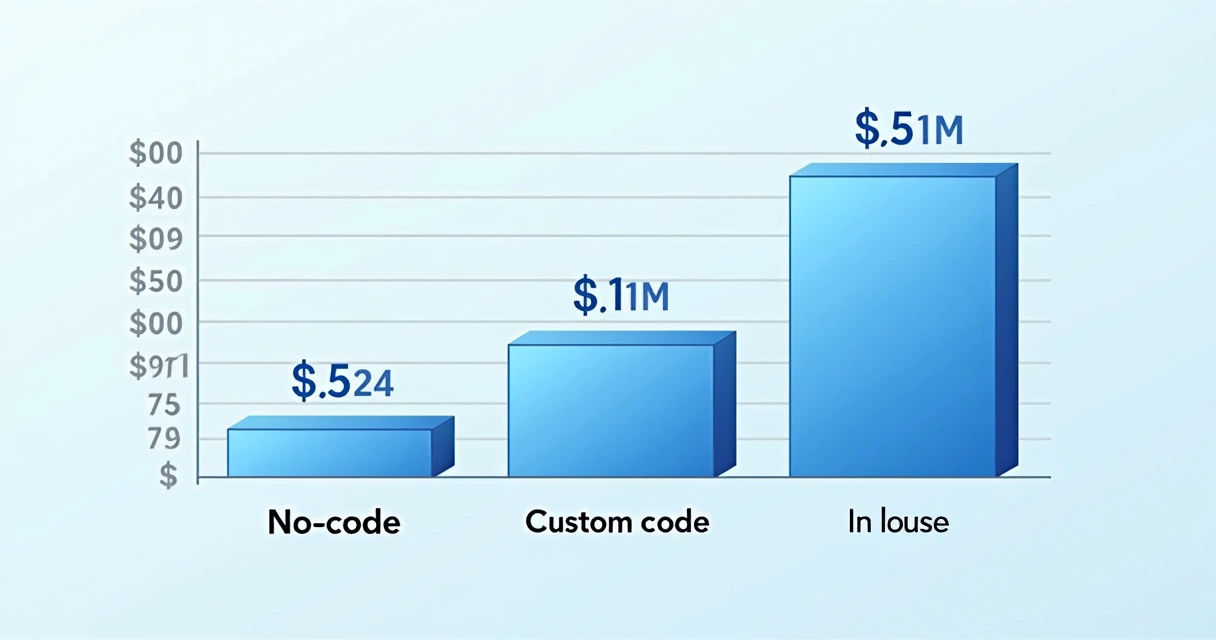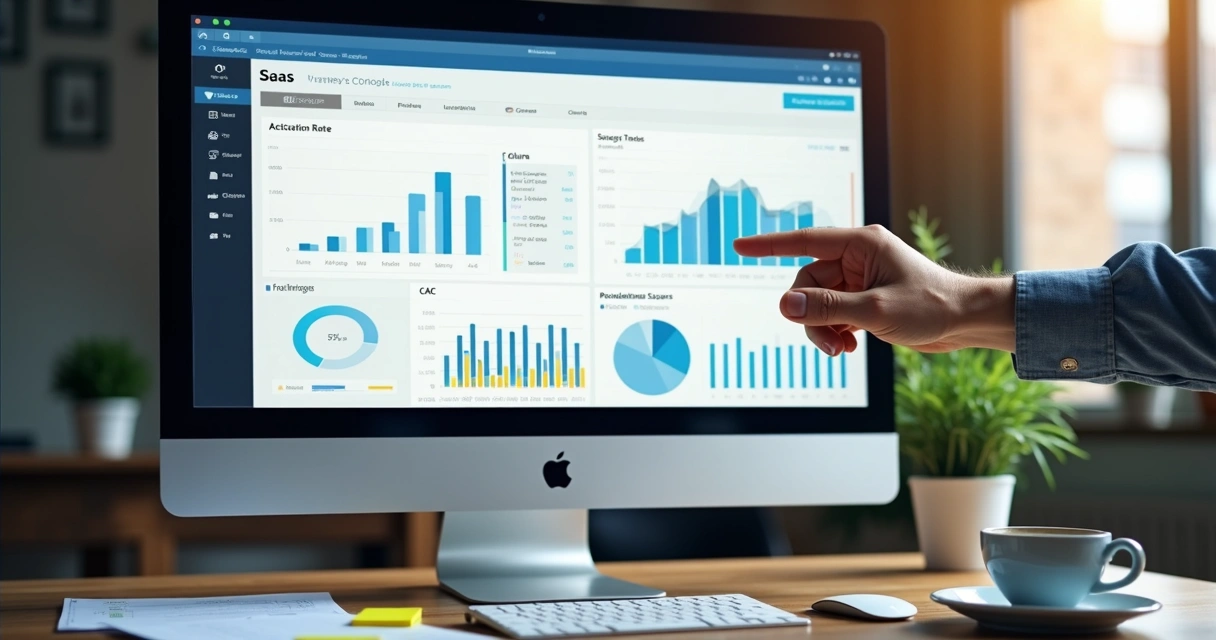Startups and founders face a tough reality: many good ideas never make it. Some stumble because they overbuild, moving too fast for customer feedback. Others wait so long to launch that competitors snatch the opportunity. In the world of SaaS, this balance—between speed, learning, and risk control—is what sets apart the few who succeed. That’s where the concept of an MVP comes in.
Build less. Validate more. Launch smarter.
This article is designed as a roadmap through the practical journey of SaaS MVP development, aimed at new founders, product teams, and anyone dreaming of turning a big idea into a scalable reality. I’ll walk through every stage, from spark to market, all while staying mindful of cost, timing, and focus. As you read, imagine how your idea can move from a napkin sketch to first paying customer—without betting the farm.
What is a saas mvp and why does it matter?
A SaaS MVP, or Minimum Viable Product, is the leanest version of your software product that solves a specific pain point for real users, using the smallest set of features you can deliver. Think of it as a live experiment, offering just enough for customers to try and respond—so you can decide if your vision is on track.
Why do most experienced founders insist on starting small? It’s about reducing risk, finding true market demand, and preventing months of wasted time and budget. Studies from the Johns Hopkins University’s Persaud Lab outline how the MVP approach lets startups gather feedback early and adjust quickly, before they've invested resources into a full product. And the Software Engineering Institute at Carnegie Mellon University shows that the Minimum Viable Capability strategy helps teams make sharper, data-driven decisions, filtering out the noise so they build only what really matters.
For founders today, the MVP isn’t just a shortcut. It’s a philosophy grounded in rapid learning and real-world validation.
 Mapping the path: the iterative mvp process
Mapping the path: the iterative mvp process
Building an MVP isn’t a straight line. Each step should be intentional, with the next stage shaped by honest user insights. Here’s the process I’d suggest, weaving in learnings from DeMeloApps’ work with startups and digital teams.
Step 1: research your market
Ideas can sound brilliant on paper. But until you know who has the problem, what they pay for now, and why existing solutions fall short, you’re flying blind. This means more than keyword searches or competitor lists (which we’ll skip for reasons you know). Go deeper.
- Interview real people—potential users, buyers, decision-makers.
- Look for repeated patterns: pain points that come up again and again.
- Scan industry forums, Reddit, and Q&A sites. What do users complain about?
- Ask: Who pays, how much, and what makes them frustrated enough to try something new?
Sketch these patterns out until you can almost hear the user’s voice in your head. You don’t need perfect data. You need real signals, repeated a few times, to move forward with confidence.
Step 2: define your ideal user
Most SaaS failures start with targeting everyone, and ending up helping no one. Pick a first segment—a clear user group with a shared pain, good buying power, and a place to reach them. Build a simple user persona, even if it’s on a napkin:
- Job/role
- What frustrates them today?
- Tools they use now
- How your product betters their day in one sentence
If your user is “anyone who needs X,” start smaller.
As founders in DeMeloApps have seen, a sharper user focus lets you talk to your audience in their language from the start. That’s how early traction is won.
Step 3: clarify your business model
Before code, sketch the basics: how will your SaaS actually make money? Subscription is the default, but there are others—per usage, tiered, freemium with paid upgrades. The trick: don’t get lost in pricing strategy. Just prove that people will pay for your core value, even if it’s a small amount. Stanford’s course Enterprise SaaS Startups: The Ride from Inception to Fundraise covers this early validation as one of the most direct paths to later fundraising. If users accept your early offer, that’s real traction.
Step 4: pick your core feature set
This is make-or-break. The MVP is not a trimmed-down product; it’s a focused experiment to find what users will pay for.
- List every possible feature you could add. Then cross off any that aren’t needed for a user to get value on Day 1.
- Circle the features that directly solve the primary problem identified in your research.
- For each, ask: “If we shipped with just this, would anyone pay us or use us?”
More features? More to maintain. Less to learn.
Step 5: fast prototyping
With your core workflow defined, build the simplest possible working version. This can mean:
- No-code tools that connect forms and databases for SaaS flows
- Clickable wireframes to demo experience and get reactions
- Custom code to solve just the key user journey—signup, action, value
Washington University’s class Build with AI: Creating a SaaS MVP in One Day proves even advanced SaaS MVPs can be stood up in hours or days now using AI tools—when the idea is focused and you skip distractions.
 Step 6: testing and feedback
Step 6: testing and feedback
Get the MVP into the hands of users as soon as possible. Even if only a handful. Watch how they use it. Ask: “What did you expect?” “What’s missing?” “Would you pay, and how much?” The most valuable insights are often the ones that make you a bit uncomfortable.
- Schedule short user feedback sessions over video or in person
- Capture every point of confusion or frustration
- Note what goes unsaid too—where users hesitate or drop off
Be wary: many users are polite and won’t say directly what they don’t like. Look for patterns across users for true signals.
Step 7: first launch and learning loop
Once you’ve improved your MVP with actual feedback, launch to a wider audience. Don’t delay hoping for “perfection.” The real learning will come from how users behave at scale. Set up simple analytics (signups, activity, churn) and keep iterating.
Launch early, listen, improve. Repeat.
How to keep your mvp focused and simple
The temptation to build “just one more feature” is strong. Founders worry about losing users or not impressing investors. But building more is often the path to going nowhere. Here’s how to keep your MVP truly minimal and effective:
- Define your “must-have” metric: What is the one outcome that proves your product has value? Example: “A user completes X workflow without help.”
- Think in user stories: “A customer signs up, does [action], and receives [value].” Anything outside that flow can wait.
- Timebox development: Set a hard deadline for V1 (for example, two weeks) and force every feature to be justified.
- Get feedback before scaling: Share wireframes or clickable prototypes before writing code.
- Outsource or automate what’s not core: Use external tools or freelancers for non-essential parts (such as admin panels, landing pages).
Many founders find no-code tools like Bubble or Webflow speed up early SaaS builds dramatically, letting you focus on your idea, not implementation. Outsourcing to experienced teams can also help you launch fast, avoiding the hiring slog. DeMeloApps, for example, brings in technical guidance and ongoing collaboration, allowing you to stay focused on customers and business model rather than wrestling with tech roadblocks. You can learn about their process at their about us page.
 Using no-code, low-code, and outsourcing
Using no-code, low-code, and outsourcing
Not every SaaS MVP needs senior engineers or months of custom code. The emergence of modern no-code and low-code solutions allow even non-technical founders to launch products and test ideas quickly. You might:
- Build core SaaS flows (sign up, dash, notifications) with tools that require no knowledge of backend code
- Connect cloud-based databases like Airtable for fast prototyping
- Outsource design or niche integrations to trusted partners, focusing your time and energy on talking to users
The reality is simple: it’s never been easier or cheaper to stand up a functional workflow for validation. The cost savings and speed to delivery can be huge. DeMeloApps offers services like their MVP Starter and streamlined MVP Builder to tackle exactly these challenges. By leveraging these shortcuts, your team can get actual market evidence before committing time and capital to deeper custom development.
 Common pitfalls: what trips up most mvp projects
Common pitfalls: what trips up most mvp projects
Even experienced teams stumble on their first SaaS MVP. Knowing the dangers ahead means you’re less likely to repeat the same mistakes. Here are the most frequent traps:
- Scope creep: Adding features until launch drags on for months. (“But users might want this, too!”)
- Ignoring feedback: Hearing issues from users but not changing course, out of pride or doubt
- Lack of real users: Building from assumptions, not actual customer conversations
- Over-automation: Coding complexity and integrations before the idea has even been proved
- Investor distraction: Getting caught up in pitch decks or demo bells and whistles instead of validating the basics
- Measure what’s easy, not what matters: Tracking only vanity metrics (signups, page views) rather than retention or usage
Your users don’t care how hard you worked. They care if their problem is solved.
Keep your focus on core outcomes. Revisit the real customer journey each week. Talk to customers—again and again. That's the best way forward.
Estimating time, cost, and resources
Everyone wants to know: how long until our MVP is live, and what will it cost? The truth is that it depends on your team, feature set, and chosen approach. Still, you can use some rough benchmarks:
- No-code/low-code MVP: 2-4 weeks build, budget usually $2,000-$7,000 depending on integrations and design
- Custom code MVP: 1-3 months, $15,000-$50,000 if hiring experienced devs or outsourcing
- In-house team: Can be cheaper, but comes at the cost of your own time and learning curve
Other expenses to consider:
- UX/UI design (important for user adoption)
- Server and hosting costs (can often be very low to start)
- Testing, analytics setup (such as Mixpanel or GA4)
- Marketing for first traction (landing pages, email sequences)
If you want a reliable estimate customized to your idea, service providers like DeMeloApps offer project quotation tools designed for fast and transparent MVP pricing, tailored to early-stage SaaS founders.
 Measuring what matters: key mvp metrics
Measuring what matters: key mvp metrics
Once your MVP is live, it’s time to track the numbers that matter most. Not every SaaS is the same, but you’ll want to focus on a few key metrics that cut through the noise:
- Activation rate: What % of new users reach the “aha” moment and get value?
- Retention/churn: How many users come back after a week or a month? Who drops off—and why?
- Customer Acquisition Cost (CAC): Are you spending more to get a user than you’ll earn from them?
- Conversion rate: What share of sign-ups become paying customers?
- Net Promoter Score (NPS): Are your earliest users so happy they recommend you to friends?
- Product/market fit score: Ask “Would you be disappointed if you could no longer use this product?” The stronger the “yes,” the closer you are to true market fit.
Track these simply—no need for heavy dashboards right away. Even a spreadsheet with user notes can show what’s working or not. Ultimately, this is the data that helps you decide whether to iterate, pivot, or scale. If you want guidance on these metrics or technical support, exploring DeMeloApps’s MVP process is a smart start.
 The value of rapid feedback and iteration
The value of rapid feedback and iteration
Perhaps the largest secret of lasting SaaS companies is not in the initial idea, but in the speed (and humility) to improve quickly. Fast learning cycles shrink guesswork and ramp up growth. Here’s how to build a habit of learning early and often:
- Run weekly feedback sessions with initial users (even a half-dozen is enough)
- Ship updates that address the biggest complaints—no months-long quiet periods
- Use surveys asking users about their level of satisfaction and must-have features
- Document every learning in a shared space, so your whole team is on the same page
- Don’t panic if feedback feels painful. Each criticism is a shortcut to a better product.
You might not get everything right at first. That’s honestly fine. It’s the willingness to listen, adapt, and adjust course that separates those whose MVP truly lands from those left wondering what might have been.
 Putting theory into practice: a real-world mvp scenario
Putting theory into practice: a real-world mvp scenario
Let’s make this real. Here’s a simplified story very much in line with what DeMeloApps teams see:
A founder wants to build a SaaS platform to streamline the work of independent consultants. She notices most existing software is too broad or expensive. Through interviews, she discovers that consultants simply want a way to auto-generate branded proposals and track which clients open them. That’s it—no fancy dashboards needed yet.
She sketches a workflow: upload client data, generate a proposal, and get an email when the link is opened. The core features become:
- Signup with email
- Upload client details
- Proposal generation from a template
- Simple tracking of proposal opens
Everything else (integrations, payment processing, advanced analytics) is shelved for later.
Using no-code tools and prototyping help from a team like DeMeloApps, her MVP goes live in three weeks. She recruits twenty consultants her network, learning in the first month:
- Feature A (auto-proposal) is a hit
- But users are confused about uploading logos—a one-click solution is built the following week
- Half of initial users ask for more analytics, which now becomes top of the backlog for version 2
The key learning? Most demand was for something much simpler than originally planned—and real feedback, not opinion, drove version 2 priorities.
MVP means learning fast. Not trying to be perfect.
How to move from mvp to product/market fit
Once your MVP has a user base—and early signs point to value—it’s time to aim higher. Product/market fit means users can’t imagine their work without your product. This next phase is about:
- Focusing on retention: why do new users come back, and what pulls them away?
- Polishing onboarding, reducing confusion, clarifying messaging
- Enhancing the features that get used most, scrapping the ones no one touches
- Adding just enough polish that users want to recommend you (referrals, testimonials); this is where the Stanford University program recommends putting more time before seeking funding
When users start requesting features rather than complaining, that’s a signal you have something sticky. Now, and only now, does it make sense to hire a larger dev team, spin up serious sales, or present to investors. Until then, keep iterating based on actual usage and honest feedback.
 Where to go next: bringing your saas idea to life
Where to go next: bringing your saas idea to life
There’s never a “perfect” moment to start. The best SaaS founders build, test, adjust—and learn their way forward. The MVP process is the best-known method for reducing risk and making progress with limited budget, whether you’re launching in Vancouver, New York, or anywhere in the world. It’s not always smooth, and there will be dead ends. But with every iteration you come one step closer to building something people actually want.
DeMeloApps has helped startups and organizations of all sizes bring digital ideas to life with empathy, focus, and speed. If you’re considering starting your MVP journey, or want expert feedback on your plan, check out resources like the MVP development guide or fast-track your launch with their starter service. For a tailored quote, their project quotation tool is a great place to start.
The first version is never perfect. Launch anyway.
Ready to move from idea to first user? Chat with DeMeloApps about turning your concept into a real, live MVP. Let your SaaS journey begin.
Frequently asked questions
What is a SaaS MVP?
A SaaS MVP (Minimum Viable Product) is a basic version of a software-as-a-service product that includes only the core features needed for early users to solve a clear problem. The goal is to launch quickly, test the concept in the real world, and get feedback before investing heavily in full development. This approach helps reduce risk and guides you to build what users truly want, as shown by modern product testing methods.
How do I start SaaS MVP development?
Begin by identifying a real problem experienced by a specific user segment. Carry out market research and user interviews. Outline only the core workflow your MVP must deliver. Choose the fastest way to build that workflow—using no-code tools, collaborative agencies like DeMeloApps, or simple prototypes. Gather feedback from early adopters, improve based on their input, and repeat. The DeMeloApps MVP guide provides a practical starting point.
How much does SaaS MVP development cost?
Costs vary by approach: a no-code MVP might cost $2,000 to $7,000 and take a few weeks; a custom-coded MVP can range from $15,000 to $50,000+ for more complex projects. Costs depend on design needs, integrations, and how much is outsourced. Getting a personalized estimate using the DeMeloApps project quotation tool can give an exact idea based on your scope and timeline.
Is building an MVP worth it?
Yes, building an MVP is nearly always worth it for SaaS founders. It limits financial risk, provides fast user feedback, and allows you to validate (or adjust) your core value before investing more. This approach has become the gold standard for launching new products, as stressed by entrepreneurship courses and studies. Even if the first version isn’t perfect, the learnings are invaluable.
What are the key features for a SaaS MVP?
Key features for a SaaS MVP are those absolutely necessary for a user to achieve the primary goal you solve. Typically, this means signup/sign-in, the main workflow or automation, and a simple dashboard to track results. Anything not tied directly to solving your user’s pain can wait. Focus on delivering a clear value as simply as possible—think “do one thing well,” not “check every box.”





